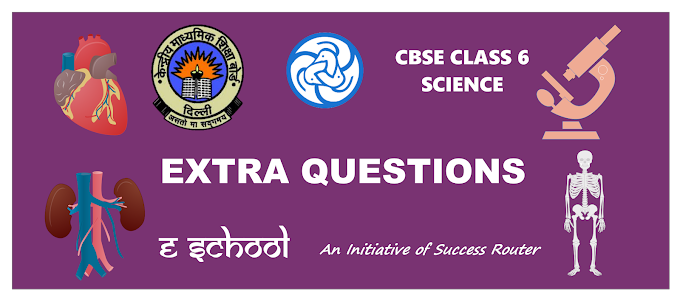| Board | CBSE |
| Textbook | NCERT |
| Class | Class 6 |
| Subject | Science |
| Chapter | Chapter 16 |
| Chapter Name | Garbage in, Garbage out |
| Number of Questions Solved | 6 |
| Category | NCERT Solutions |
NCERT Solutions for Class 6 Science Chapter 16 Garbage in, Garbage out
NCERT TEXTBOOK EXERCISES
(Page 164)
Question 1.
(a) Which kind of garbage is not converted into compost by the redworms?
(b) Have you seen any other organism besides redworms, in your pit? If yes, try to find out their names. Draw pictures of these.
Answer :
(a) Non-biodegradable garbage which includes polythene bags, broken glass, aluminium wrappers, broken toys, plastic utensils, etc., are not converted into compost by the redworms.
(b) Students should try themselves.
Question 2.
Discuss:
- Is garbage disposal the responsibility only of the government?
- Is it possible to reduce the problems relating to disposal of garbage?
Answer :
- In most of the cities, the responsibility of garbage disposal is on Municipal Corporations and most of the people realize no responsibility of their own. We should realize that the cleanliness is the collective responsibility of both, the people and the government. If people are not aware of their responsibilities, government alone cannot successfully manage the garbage disposal. We must have correct idea and we must try our best to make our surroundings clean. We should not throw our wastes here and there. We should manage disposal problems at the level of our mohallas rather than waiting for government efforts.
- Yes. It is possible to reduce the problems relating to disposal of garbage. We can try 3‘R’ to reduce this problem. These are:
- Reduce : We should minimize the use of things that produce wastes.
- Reuse : We can reuse many things which we usually throw after using j once.
- Recycle : We can recycle the things that we usually throw and make many useful things, e.g., paper can be recycled to make paper baskets etc. .
Question 3.
(а) What do you do with the leftover food at home?
(b) If you and your friends are given the choice of eating in a plastic plate or a banana leaf platter at a party, which one would you prefer and why?
Answer :
(a) We usually throw the leftover food outside our homes. But kitchen-wastes are biodegradable by microorganisms. So leftover food at home should be dumped into compost pits so that it gets converted into manure after some days.
(b) We will prefer banana leaf platter. This is because banana leaf platter is biodegradable and adds no problem in disposal while a plastic plate is non- biodegradable and adds a lot of difficulties in disposal and causes pollution.
Question 4.
1. Collect pieces of different kinds of paper. Find out which of these can be recycled.
2. With the help of a lens look at the pieces of paper you collected for the above question. Do you see any difference in the material of recycled paper and a new sheet of paper?
Answer :
1. We can collect the following kinds of paper:
- Old newspapers,
- Magazines,
- Used envelopes,
- Notebooks, and
- Shiny plastic coated paper.
We can recycle all the kinds of paper except shiny plastic coated paper.
2. Yes, surface of recycled paper is rough while that of new sheet of paper is smooth.
Question 5.
(a) Collect different kinds of packaging material. What was the purpose for which each one was used? Discuss in groups.
(b) Give an example in which packaging could have been reduced?
(c) Write a story on how packaging increases the amount of garbage.
Answer :
Try it yourself.
Question 6.
Do you think it is better to use compost instead of chemical fertilizers? Why?
Answer :
Yes. Compost is better to use instead of chemical fertilizers because
- Compost is eco-friendly while chemical fertilizers destroy the natural composition of soil and have adverse effect on human health.
- The production of compost is cheap, easy and harmless while that of chemical fertilizers is costlier, problem making, i.e., adds pollution to environment.
We hope the NCERT Solutions for Class 6 Science Chapter 16 Garbage in, Garbage out help you. If you have any query regarding NCERT Solutions for Class 6 Science Chapter 16 Garbage in, Garbage out, drop a comment below and we will get back to you at the earliest.


0 Comments